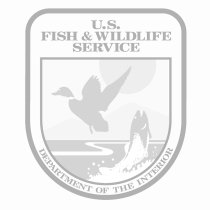Location
States
ArizonaIntroduction
Mesquite (Prosopis spp.) is a common woody plant in drylands across the southwestern United States and Northern Mexico. Velvet mesquite (Prosopis velutina) has slowly spread across Sonoran Grasslands over the last 100 years, potentially due to factors like climate change climate change
Climate change includes both global warming driven by human-induced emissions of greenhouse gases and the resulting large-scale shifts in weather patterns. Though there have been previous periods of climatic change, since the mid-20th century humans have had an unprecedented impact on Earth's climate system and caused change on a global scale.
Learn more about climate change , less frequent fire, and increased seed dispersal. Mesquites can outcompete native grasses and other herbaceous species for water resources. The loss of grasses can increase soil erosion.
These ecological realities create many management issues for land managers and landowners. Common mesquite encroachment management techniques, like tractor removal and herbicides, are reactionary and may do little to prevent mesquite from establishing again in the future. Reactionary measures can cost land managers vital time, energy, and money.
Researchers at the University of Arizona studied the factors that lead to the encroachment of mesquite into grasslands at the Santa Rita Experimental Range (SRER) in Southeastern Arizona. They wanted to help landowners and managers identify proactive management strategies that best respond to Mesquite encroachment and mitigate its impact byusing strategies that were best suited to their land. They studied the factors that led to mesquite seedling establishment and developed a new geospatial model for landowners and managers to predict which areas were at the highest risk for mesquite encroachment now and in the future. These tools help better understand how mesquite establishes in the SRER. The 3-year model development project and the 3-year seedling establishment study sought to better understand how land managers can implement proactive management techniques to stay ahead of mesquite encroachment in grasslands instead of reacting once it had already occurred.
Key Issues Addressed
Managers need to know when to implement certain treatments to combat mesquite encroachment. Managers do not always have a clear picture about where they can use management techniques that can respond to mesquite encroachment effectively. Managers currently have limited access to tools that evaluate mesquite establishment risk and what areas are most susceptible to mesquite encroachment. Understanding mesquite encroachment on a landscape-wide scale can better help managers know what management techniques to prioritize. A landscape-wide lens could also help refine their techniques to not expend resources on temporary reactive measures.
Mesquite seedling establishment is influenced by precipitation, temperature, and seed dispersing insects and small mammals, but information on the various ecological factors that create favorable conditions for mesquite seedlings to establish is not widely known. There is a lack of research on the specific environmental conditions mesquite seeds need to germinate and establish. For example, how mesquite seedlings grow in response to different amounts of precipitation, particularly during the monsoon season, is unknown.
There is a lack of research on how predation from herbivores impacts seedling establishment across grasslands. Historic thought suggests that cattle grazing reduces grass competition and increases the space where mesquite could establish. But more research is needed to understand how cattle grazing influences mesquite seedling establishment. Information on the impact of rodent and ant predation on mesquite seeds is largely unknown, so management planning is difficult. Knowledge of herbivore predation would allow managers to better understand mesquite encroachment and devote resources effectively.
Project Goals
- Develop the Shrub Encroachment Early Detection System (SEEDS) model to help predict areas at highest risk of encroachment
- Understand the ecological drivers of mesquite seedling establishment in grasslands
- Study mesquite seed and seedling predation by rodents and ants, and the impacts of cattle on mesquite seedling establishment
Project Highlights
Mesquites Beat Drought: Mesquite can establish even during drought because it is the number of consecutive days of rain, not total rainfall over the season, that determines mesquite establishment.
- Computer Models to Get Ahead: Researchers developed a new model called SEEDs to better understand mesquite encroachment risk. Using geospatial analysis, the model assessed environmental factors on the Santa Rita Experimental Range in Southeast Arizona, including soil characteristics and precipitation quantities, and estimated current mesquite cover. They compared it with historical shrub cover data to evaluate its current condition forecast and predicted where mesquite might encroach next. These findings can help land managers get ahead with proactive management and prepare for mesquite establishment on their land.
- Evaluate Mesquite Cover Risk: The SEEDS model identified areas of high risk where conditions were favorable for more encroachment. Across the study region, 45% of the land area was at moderate to high risk of mesquite encroachment. The areas that had the highest mesquite cover were near mountain foothills and washes. Other contributing factors included elevation and fall/winter precipitation. Soils with high clay content and regions with low precipitation fared the best against mesquite shrub encroachment.
- Mesquite Seedling Establishment: The study found that the ideal time for mesquite to establish is during the monsoon season if there are more than 8-10 consecutive days of rain. However, mesquite can establish in both extremely dry and wet conditions.
- Impacts from Rodents and Ants: Seedling establishment was lowest when rodents and ants were able to forage the seedlings. However, foraging was not enough to completely prevent seedling establishment.
- Grazing Impacts: Researchers simulated the impacts of grazing on the seedlings by clipping surrounding grasses short. Clipping grasses did not change the likelihood of seedling establishment.
Lessons Learned
Managers and landowners must plan for the continuous establishment of mesquite on their land. Typical dryland ecosystem dynamics suggest plants in the desert typically establish during wet periods, but mesquite can establish even in dry periods. Mesquite prefers areas of moderate rainfall and soils lower in clay content, especially near washes, but can establish readily in upland areas. Periodic control and management are needed regardless of environmental conditions.
A deeper understanding of biotic and abiotic conditions can highlight which techniques to use and when. For example, the SEEDs modeling indicated mesquite shrubs can re-establish relatively quickly (5-10 yrs) in areas that experienced a fire. However, fire can also be used to control seedling establishment and maintain a grassland state. Even though some techniques may be effective at addressing mesquite encroachment, they may not be appropriate in all situations. A wider look at the landscape and abiotic/biotic conditions can allow landowners to more effectively manage resources and achieve specific conservation goals. By looking at factors that drive mesquite encroachment, the SEEDs model can help land managers decide where control techniques may be utilized on their land.
Proactive management is financially beneficial in the long term. The SEEDs model can allow managers to plan and take effective actions, which results in better budget planning. The model’s ‘risk categories’ are based on environmental data from the past and present landscape in order to predict where mesquite cover may increase in the future. SEEDs can help identify what areas may need the most attention. The foresight could alleviate many large costs by allowing managers to decide where to devote resources and the areas they can deprioritize. SEEDS, coupled with increased knowledge on the site ecological conditions mesquite seeds need to establish, can help managers use financial resources more effectively.
Next Steps
- Expand the geographical range of SEEDs to incorporate more information relevant to the entire Southeast Arizona. This will increase the scope and capability of the model to best serve the entire region.
- Build a web app for landowners to use when managing their land. The app, which the public can expect to see on the market in the Spring of 2022, will grant landowners the ability to gain information for their land and plan appropriate management strategies. The app will offer the potential to increase collaboration across rangelands and build transboundary partnerships.
Funding Partners
Resources
- ShrubRisk Tool based on SEEDS model
- Rutherford, W. et. al. (2021) “Shrub Encroachment Early Detection System (SEEDS): a rangeland conservation tool- Progress Report” Sustainable Agriculture Research and Education.
- Shrub (Prosopis velutina) recruitment in Sonoran grasslands: precipitation, not herbaceous cover, matters most poster by William A. Rutherford, S.R. Archer, L. Weber-Grullon, and O.E. Salla.
- Predicting Woody Plant Encroachment Risk on Sonoran Desert Rangelands poster by William A. Rutherford and S.R. Archer.
- Evaluating Shrub Proliferation Risk on Sonoran Desert Grasslands presentation by William A. Rutherford and Steven R. Archer.
- Velvet Mesquite Establishment in Sonoran Grasslands: grass utilization is of little consequence to monsoon precipitation variation presentation by Austin Rutherford.
Contacts
William Austin Rutherford, University of Arizona: arutherford@email.arizona.edu
CART Lead Author
Sam Johnson: Pollinator Conservation in Grasslands - Stories of Adaptive Management Intern, U.S. Fish and Wildlife Service: 2sam.johnson2@gmail.com
Suggested Citation
Johnson, S.E. (2022) “Proactive Management for Velvet Mesquite Encroachment in Sonoran Grasslands.” CART. Retrieved from https://www.fws.gov/project/proactive-management-mesquite-encroachment.






